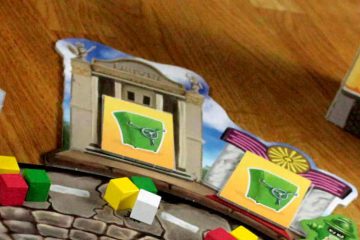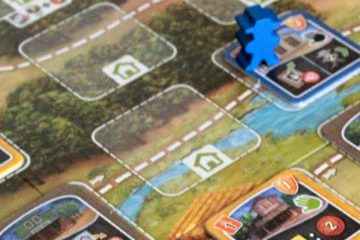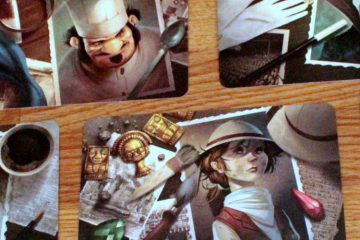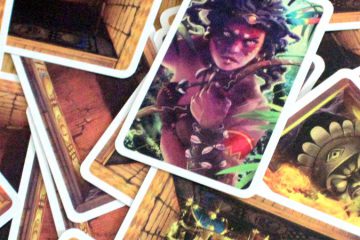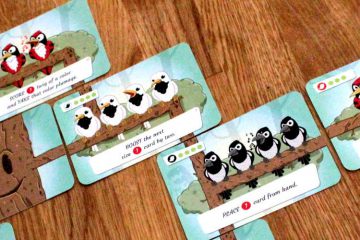Rob ‘n Run might easily mislead you when you first look at it. Between the cartoonish cover art and the paper built escape vehicle on the table you could be forgiven for mistaking it for a kids’ game. You’d still be mistaken. Although Rob ‘n Run is suitable for kids – the crimes you commit are non-violent safecracks, and the rules are straightforward enough – adult gamers will have more fun. You have to take great care how you communicate, what conclusions other players will likely draw from revealing certain information in the situation you find yourself in. Kids below the recommended age of ten will struggle with that. We are enjoying the hell out of it.
The first published design by Michael Luu is a cooperative game with restricted communication. The players are a gang of safecrackers doing a few more jobs on their way to the airport. For every robbery one of them is the boss. The boss knows the tools needed for this job. Instead of just telling the rest of the gang, however, he can only give cryptic clues. The rules say he does this so the police cannot figure out where they are from what he says on the radio. I think it’s more likely that he read to many Batman comics and The Riddler is his idol.
Read more
